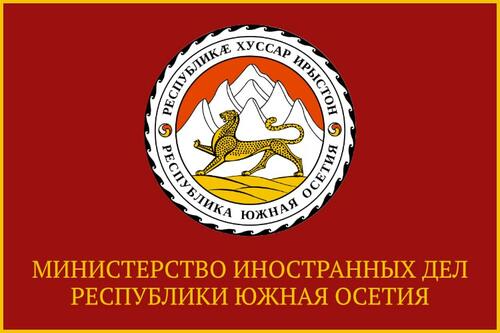This material was prepared to the VI Congress of Ossetian people.
We all believed then, that we will be able to avoid war…
Tskhinval is the capital of the Republic of South Ossetia, one of the most ancient cities of Caucasus, founded by tsar Asfagur in 262. Tskhinval is a heart of the South of Ossetia, its capital. It is like in focus, gathers all the best and decent of the Ossetian land. Tskhinval is an administrative and cultural center, organizes the economic life of the republic, has an ancient history. There are industrial enterprises situated here, main establishments of sciences, literature and art are concentrated here.
The significance of Tskhinval had immeasurably increased after declaration of the republic. The leading role in strengthening of the defense of the Republic against Georgian aggression has contributed greatly for Tskhinval to become a symbol of a struggle for independence and statehood.
Tskhinval today is a center of everything that builds and consolidates our Republic.
Historically forming city has numerous traces of the past in the monuments of archeology, in the types and appearance of different constructions of cult.
I.Gildenstedt calls Tskhinval Krtskhinvali, or Chreba, noting that it is a remarkable place. Tskhinval is situated on a beautiful foothill place in the Big Liakhva river gorge. From north-east and north-west it is closely adjoined by not very big picturesque mountains. In the very beginning of its history Tskhinval was one of the main migration crossroads, which was passed by armies and commercial caravans. A remarkable consequence of this was diversity of ethnic composition of the population. There had been a racy Jewish quarter in Tskhinval, destroyed during the Georgian aggression, Armenian streets etc. Since ancient our ancestors settled on both declivities of the main Caucasian mountain range. Mainly they lived in the mountains. Mountains were part of their life space. Their style of life and activities along centuries ranged from active field-life to a settled life in the mountains. At the same time, they kept valleys under strict control, and they also were part of their world. Being quite far with their life-style at those times from leading a quiet valley life, they allowed to settle in the valleys to different migration flows, which organized trade, primitive settled infrastructure and built different cult constructions there. Thus, for example, in XIV century part of migration lows of Armenian and Jews from Asia and Europe stopped precisely on the territory of South Ossetia, which became their motherland. Some of them came earlier. Alans-Ossetians were peacefully treating the new-settlers, new contacts, more so, that their commercial relations and skills were not of minor importance for creation of common territorial-civil entity with special politico-ethnic coloring. Location of Tskhinval contributing greatly to this; for ages the merchants from the whole South Caucasus exchanged their goods here. As time flows many things alter. Gradually Ossetians, little by little, start to resettle to the valley, to the town, which in the course of time becomes a certain center of communication, establishment of contacts, information etc. Beginning from the second half of XIX century Tskhinval started to develop more actively, acquiring infrastructure, though on the whole, by that time it remained far from the main ways of communication and economic connections.
It is necessary add here also a political aspect, related to Georgian influence and attitude. Georgia, with help of Russian administration, was “Georgianizing” the city, capturing lands, preventing Ossetians from establishing new mode of life etc. Nevertheless, Tskhinval was still more and more actively acquiring national appearance; it became synthesizer and popularizer of Ossetian traditions, culture – it could be felt in everything, it penetrated everywhere, spreading and enriching.
On 5 December 1917 the residents of Tskhinval addressed a petition to the Commissar of Internal Affairs. They were asking to allow city home rule. Most part of the population of Tskhinval was engaged in trade and crafts, the other part – in viticulture and horticulture.
There were commercial-industrial enterprises functioning here: storehouse of agricultural instruments, storehouse of sawing machines “Zinger”, 9 handicrafts sawmills, 5 brick production factories etc.
Besides, there was a post-telegraph department and educational institutions in Tskhinval. And it was slowly but incessantly developing.
1920-1930 – new objects of industrial, social, cultural character appear here. It should be noted, that Tskhinval became a uniting center of Ossetians, which in the beginning of XX century within different socio-political movements were struggling and searching for solutions regarding the fate of South Ossetia.
On 20 April of 1922 South Ossetian Autonomous Region, with the center in Tskhinval was formed. In 1934 Tskhinval was renamed into Stalinir. Its historical name was returned to it in 1961. With many positive trends with regard to development of Tskhinval, ideological aspect was seriously influencing the core and depth of the on-going processes of that period, and the influence was far from positive. Development of Tskhinval continued. New plants, factories and schools were built, and the first institution of higher education – South Ossetian State Pedagogical Institute – was established.
Tskhinval is a very important linking point of car transport, starting point of the movement along TransCaucasian motorway (Tskhinval-Alagir). In spite of the fact, that Soviet Georgia also continued the policy of hidden, but sometimes obvious denationalization, Tskhinval remained the center of Ossetian spiritual and cultural life.
New stage in history – 1990s, tragic and heroic years. In 1989 Georgian aggression against South Ossetia began, and it is on-going to this day. Tskhinval became the center of resistance. At the same time, it is in these very years, that the political role of Tskhinval strengthens. In accordance to the Constitution of the Republic of South Ossetia – art. 3 “The capital of the Republic of South Ossetia is Tskhinval, the status of which is determined by the constitutional law”.
The city has its own Charter, which determines the structures and titles of administrative bodies, legal norms of activities, authorities, economic and financial bases etc.
Tskhinval has its own emblem, which is official symbol of the capital. The emblem is based on the colors of the State flag of the RSO. In the upper part of the emblem three towers are depicted on the background of the rising sun. The sun rays form the title of the city. Below is the image of one of the modern ancient Arian signs, symbolizing the harmony of life through the image of a wheel – which is a symbol of eternal movement, with the image of twelve-string harp.
The cup of Uatsamong symbolizes hospitality, abundance, generosity. In the bottom there is a key of the city.
Georgian aggression of 1989-1992, 2004, 2008 caused considerable damage to the city. We are daily reminded about the war by the ruins of the Jewish quarter, shelled houses, renown cemetery-memorial in the yard of school № 5.
To the 10-years anniversary of RSO a monument was erected to the fallen defenders of the Fatherland beside the temple of Holy Virgin Mary.
Since 2005 Tskhinval is a member assembly of capitals and big cities. MAG includes 64 republics, marginal regional centers, representing all federal districts of RF and 8 countries of CIS.
Tskhinval was accepted into membership of the Assembly on the 10th session of MAG in Minsk.
Rehabilitation works are currently on-going in Tskhinval. The infrastructure of the city is strengthening. New construction is carried out. The city lives and renews in the conditions of permanent provocations.
Nevertheless, contacts of South Ossetian capital with other cities strengthen.
Tskhinval became a member of worldwide organization “united cities”.
A title of Honorable citizen of the city has been founded. The following people are the Honorable citizens of Tskhinval: Vostrikov Aleksei Nikitich, Gioev Mikhail Il’ich, Merkuryev Aleksei Alekseevich and others.
The history of Tskhinval is complicated and interesting. Tskhinval is an entanglement of numerous centuries-long political interests and ideologies.
Many parties are trying to take away its history from Tskhinval: from perfidious neighbors to those migration groups, who had in the past found shelter here. While those, whose ancestors were warming with their eyes, enlivening with their march, inspiring with their prayers their own land, continue to live, and proudly, like their native mountains, and firmly and impatiently remind, that the land of Ossetia is for peace, kindness and joy.






